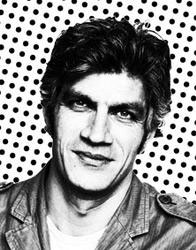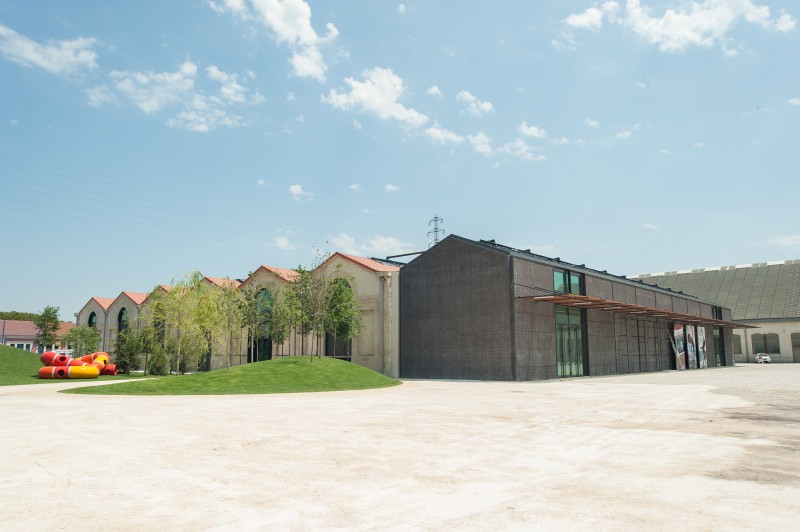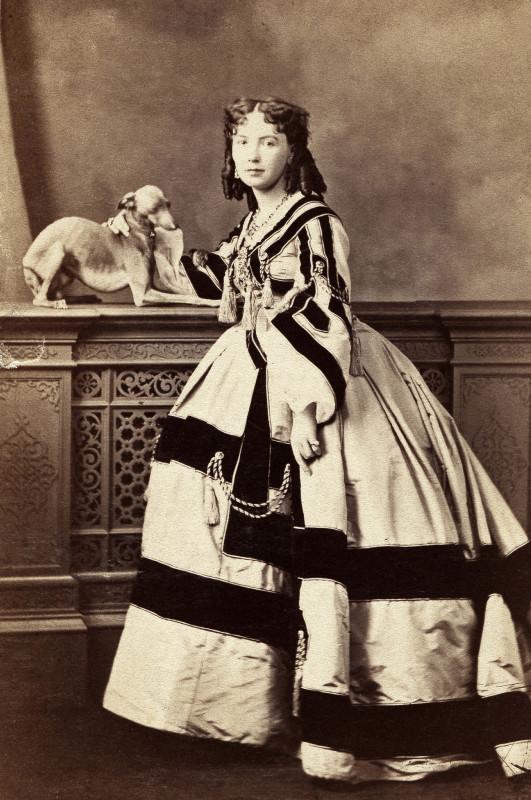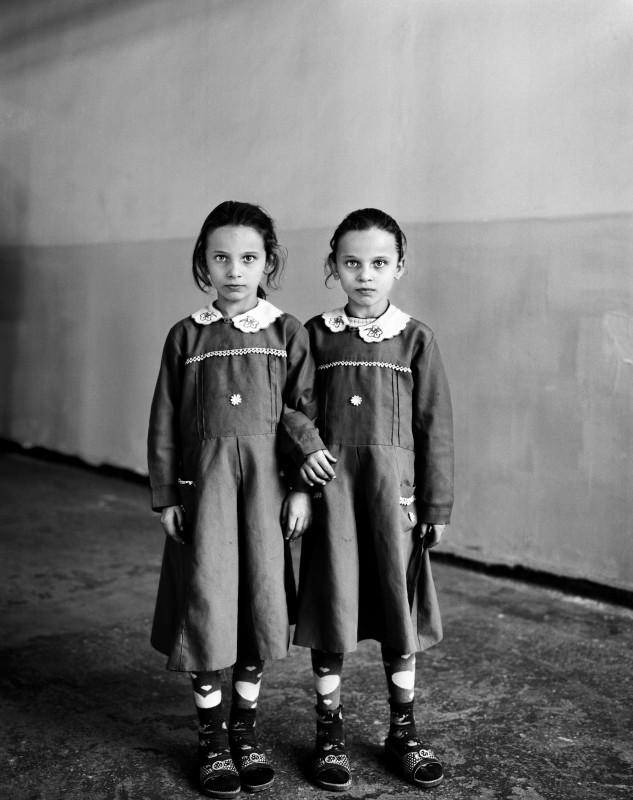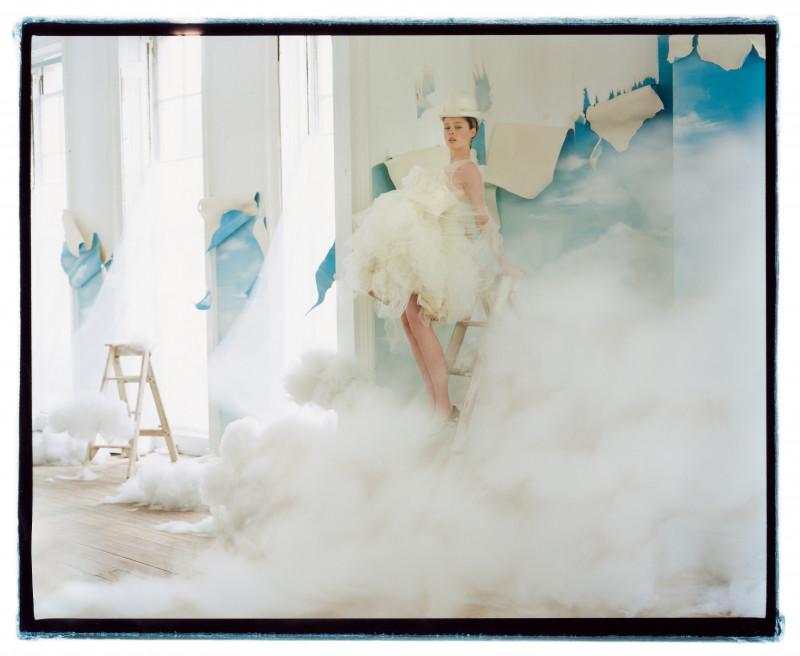Home → EXHIBITIONS 2008 → IMPRESSIONS PHOTOGRAPHIQUES : PROGRAMME PROPOSÉ PAR CHRISTIAN LACROIX 1/3 → GRÉGOIRE KORGANOW
Edition 2008
GRÉGOIRE KORGANOW
À côté, Backstage
"His impeccable, opulent, delicate backstage reports made me want to find out more, beyond the journeys we know about. So I am happy that in Arles we are able to show his equally delicate portraits of prisoners’ wives."
Christian Lacroix
À côté
60,000 inmates in France’s prisons. How many mothers, fathers, wives, children? Numbers unknown. People made invisible. Unshown, unheard, unseen. Existing for nobody, or almost. In 2005 director Stéphane Mercurio asked me to work on her film À côté (Next Door), on prisoners’ families. She had set up her camera in a day centre in Rennes, right next door to the men’s prison. The families stop in before and after their visits, several times a week. Stéphane Mercurio wanted me to photograph the families mainly outside this context, during their trips between home and prison. I knew nothing of the prison world. Like so many people I had never imagined that behind each prisoner was a family who loved this man stripped of his freedom. When I went to the day centre in Rennes I was abruptly confronted with the reality, the brutality of the prison system. I saw the anger of a girl of seventeen who was refused visitor’s rights on the grounds that she was a minor. I saw the distress of a mother with a baby in her arms when she was told that her son, her ‘big boy’, was being transferred to a prison 400 kilometres away: she had no driving licence, probably very little money, five children and no means of going to see him. I saw a woman wringing her hands in anguish after a visit: she had been told her husband wasn’t there. Period. Where was he? What could have become of him? She was given no answer. I saw women hide sweets in their clothes, so they could slip them to their menfolk during the visits. I was struck by the dignity of these women, men and children who fight to keep alive the love that is a prisoner’s only chance of making it back into society. I committed myself totally to the project. For over a year I photographed these lives left hanging, put on hold: a trial, a house-moving undertaken so as to be closer to a husband, a snatched moment of contact when a woman risks her visiting rights by trying to communicate from just outside the prison. I related these people’s private lives and their solitude. I photographed existences in which everything seems to hinge on the return of the father, husband or son. No spectacular images, simply looks and gestures that spoke of this life next door to the prison: Claire wrapped in a T-shirt belonging to her man, Chantal alone and tense in the waiting room of the courthouse in Nantes, Christine on the footpath screaming words of love to her imprisoned husband. I continued my work beyond the film, with portraits taken at the day centre in Rennes: prisoners’ wives, mothers, uncles, sons… I photographed them after their visits: just a few minutes to catch these silent faces marked by love, but by violence too. Watching them staring into the lens, I tried to glimpse a fraction of their story and to capture the powerful link between men and women and their dear ones in prison. I concentrated mainly on the women as the ones who keep these links alive: ‘Women Courages’ compelled to bear the dual sentence of being the loved one and at the same being despised by the system. To listen to them, to look at them is a form of resistance.
Grégoire Korganow
Backstage
In July 2003 the magazine Marie Claire asked me to go behind the scenes at haute couture fashion shows. This was something completely new for me: knowing nothing about the world of fashion, I imagined myself working in total freedom. I was in for a big surprise. To be a backstage photographer is to enter a world governed by the irrational. Getting the famous badge that lets you in is a challenge that means you really have to keep your cool. But for the three days of the collections I had to get pictures, with or without a badge. Sometimes you find yourself negotiating literally on the threshold. Finally there I am behind the curtain a few hours before the show is due to begin, but the battle is far from over. The next part of the game is not getting thrown out – and when you’re 6 foot 4 it’s hard to go unnoticed. Right now fifty photographers from all over the world are rushing about among the hairdressers, make-up people, mannequins, VIPs and security men. Techno’s blasting from the sound system, the girls are sending text messages, there’s nothing much to do except hang on. The closer we get to show time, the more the tension level rises, and then someone shouts ‘Too many people! Photographers out!’ The first time I obediently left, only to realize that once outside there was no getting back in. So now I opt for passive resistance, making myself as small as I can and waiting for the storm to blow over. As a rule a wave of photographers heads out the door and the tension drops, but not for long. In the end there are maybe ten of us left, often the same ones. I’ve had to resist whole series of expulsions, find the right person to negotiate with, realising that no can mean perhaps and perhaps can mean yes and yes can all of a sudden become no. Sometimes I was absolutely drained by these negotiations. Then the show begins, with the photographers all crammed together in the same place, sometimes roped off. Thirty minutes of being totally spaced out. I keep taking pictures, taking pictures, almost compulsively and without knowing why. Everybody’s running, shouting, jostling. I try to find a good spot, and then I don’t budge. When it’s all over I’m drenched in sweat, I’m exhausted, I’ve used ten films – a roll every three minutes. More than 350 pictures per show. It’s not this frantic everywhere. No shouting and jostling at Christian Lacroix’s. You almost feel you should whisper. People take their photos calmly, say excuse me if they get in your way. Twice a year for four years I’ve managed to get myself accepted. It’s easier now, but the photos are more complicated: I have to come up with something new. The setting is the same – only the clothes change. So at each show I experiment, I think up new images, I use flash, black and white, colour, camera shake and close up – but never forgetting that the clothes come first. I don’t photograph tell-tale incidents, I avoid anecdotal stuff. For me the mannequins are unreal. I don’t say much.
Grégoire Korganow
Christian Lacroix
À côté
60,000 inmates in France’s prisons. How many mothers, fathers, wives, children? Numbers unknown. People made invisible. Unshown, unheard, unseen. Existing for nobody, or almost. In 2005 director Stéphane Mercurio asked me to work on her film À côté (Next Door), on prisoners’ families. She had set up her camera in a day centre in Rennes, right next door to the men’s prison. The families stop in before and after their visits, several times a week. Stéphane Mercurio wanted me to photograph the families mainly outside this context, during their trips between home and prison. I knew nothing of the prison world. Like so many people I had never imagined that behind each prisoner was a family who loved this man stripped of his freedom. When I went to the day centre in Rennes I was abruptly confronted with the reality, the brutality of the prison system. I saw the anger of a girl of seventeen who was refused visitor’s rights on the grounds that she was a minor. I saw the distress of a mother with a baby in her arms when she was told that her son, her ‘big boy’, was being transferred to a prison 400 kilometres away: she had no driving licence, probably very little money, five children and no means of going to see him. I saw a woman wringing her hands in anguish after a visit: she had been told her husband wasn’t there. Period. Where was he? What could have become of him? She was given no answer. I saw women hide sweets in their clothes, so they could slip them to their menfolk during the visits. I was struck by the dignity of these women, men and children who fight to keep alive the love that is a prisoner’s only chance of making it back into society. I committed myself totally to the project. For over a year I photographed these lives left hanging, put on hold: a trial, a house-moving undertaken so as to be closer to a husband, a snatched moment of contact when a woman risks her visiting rights by trying to communicate from just outside the prison. I related these people’s private lives and their solitude. I photographed existences in which everything seems to hinge on the return of the father, husband or son. No spectacular images, simply looks and gestures that spoke of this life next door to the prison: Claire wrapped in a T-shirt belonging to her man, Chantal alone and tense in the waiting room of the courthouse in Nantes, Christine on the footpath screaming words of love to her imprisoned husband. I continued my work beyond the film, with portraits taken at the day centre in Rennes: prisoners’ wives, mothers, uncles, sons… I photographed them after their visits: just a few minutes to catch these silent faces marked by love, but by violence too. Watching them staring into the lens, I tried to glimpse a fraction of their story and to capture the powerful link between men and women and their dear ones in prison. I concentrated mainly on the women as the ones who keep these links alive: ‘Women Courages’ compelled to bear the dual sentence of being the loved one and at the same being despised by the system. To listen to them, to look at them is a form of resistance.
Grégoire Korganow
Backstage
In July 2003 the magazine Marie Claire asked me to go behind the scenes at haute couture fashion shows. This was something completely new for me: knowing nothing about the world of fashion, I imagined myself working in total freedom. I was in for a big surprise. To be a backstage photographer is to enter a world governed by the irrational. Getting the famous badge that lets you in is a challenge that means you really have to keep your cool. But for the three days of the collections I had to get pictures, with or without a badge. Sometimes you find yourself negotiating literally on the threshold. Finally there I am behind the curtain a few hours before the show is due to begin, but the battle is far from over. The next part of the game is not getting thrown out – and when you’re 6 foot 4 it’s hard to go unnoticed. Right now fifty photographers from all over the world are rushing about among the hairdressers, make-up people, mannequins, VIPs and security men. Techno’s blasting from the sound system, the girls are sending text messages, there’s nothing much to do except hang on. The closer we get to show time, the more the tension level rises, and then someone shouts ‘Too many people! Photographers out!’ The first time I obediently left, only to realize that once outside there was no getting back in. So now I opt for passive resistance, making myself as small as I can and waiting for the storm to blow over. As a rule a wave of photographers heads out the door and the tension drops, but not for long. In the end there are maybe ten of us left, often the same ones. I’ve had to resist whole series of expulsions, find the right person to negotiate with, realising that no can mean perhaps and perhaps can mean yes and yes can all of a sudden become no. Sometimes I was absolutely drained by these negotiations. Then the show begins, with the photographers all crammed together in the same place, sometimes roped off. Thirty minutes of being totally spaced out. I keep taking pictures, taking pictures, almost compulsively and without knowing why. Everybody’s running, shouting, jostling. I try to find a good spot, and then I don’t budge. When it’s all over I’m drenched in sweat, I’m exhausted, I’ve used ten films – a roll every three minutes. More than 350 pictures per show. It’s not this frantic everywhere. No shouting and jostling at Christian Lacroix’s. You almost feel you should whisper. People take their photos calmly, say excuse me if they get in your way. Twice a year for four years I’ve managed to get myself accepted. It’s easier now, but the photos are more complicated: I have to come up with something new. The setting is the same – only the clothes change. So at each show I experiment, I think up new images, I use flash, black and white, colour, camera shake and close up – but never forgetting that the clothes come first. I don’t photograph tell-tale incidents, I avoid anecdotal stuff. For me the mannequins are unreal. I don’t say much.
Grégoire Korganow
These photographs were taken for Stéphane Mercurio’s film, À côté (executive producer Iskra). He is represented by the Rapho Agency, Paris. Prints produced by Granon. Executive producer: Le Tambour qui parle.
Exhibition projected at the Atelier de Mécanique, Parc des Ateliers.


